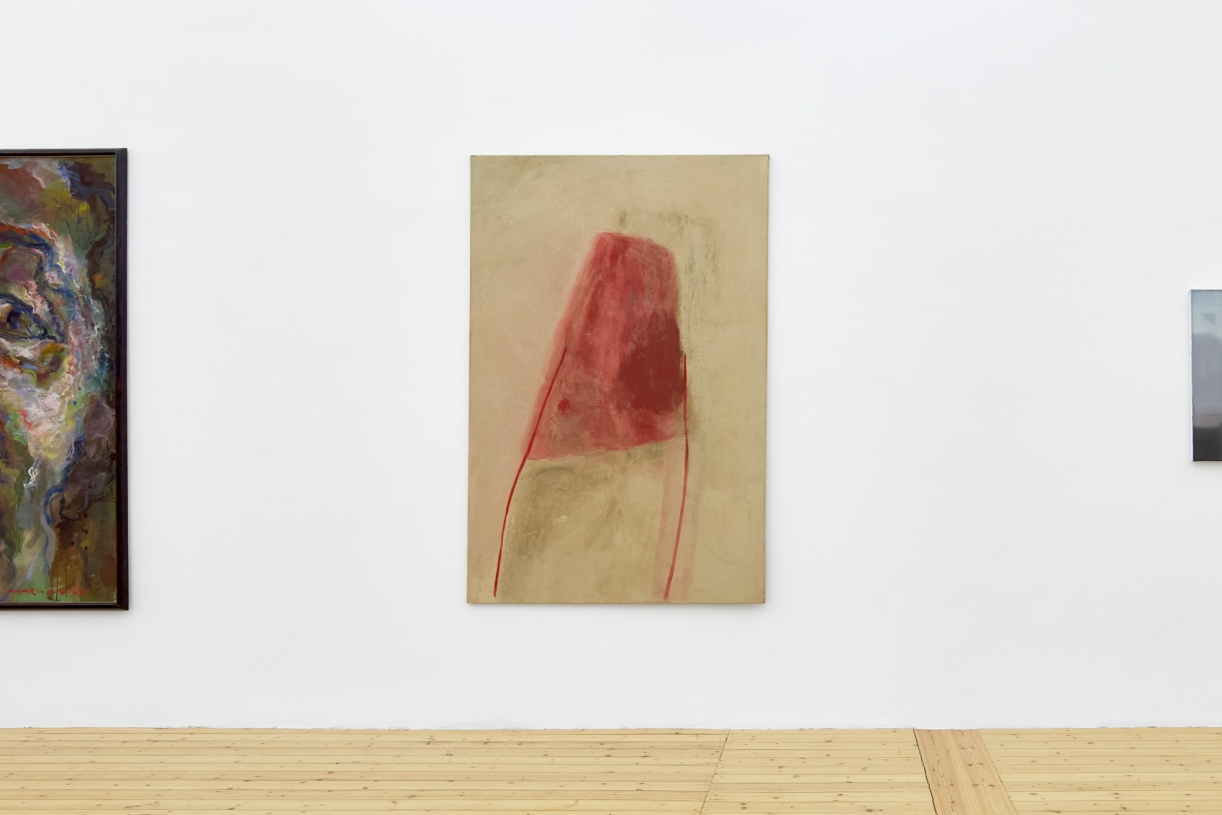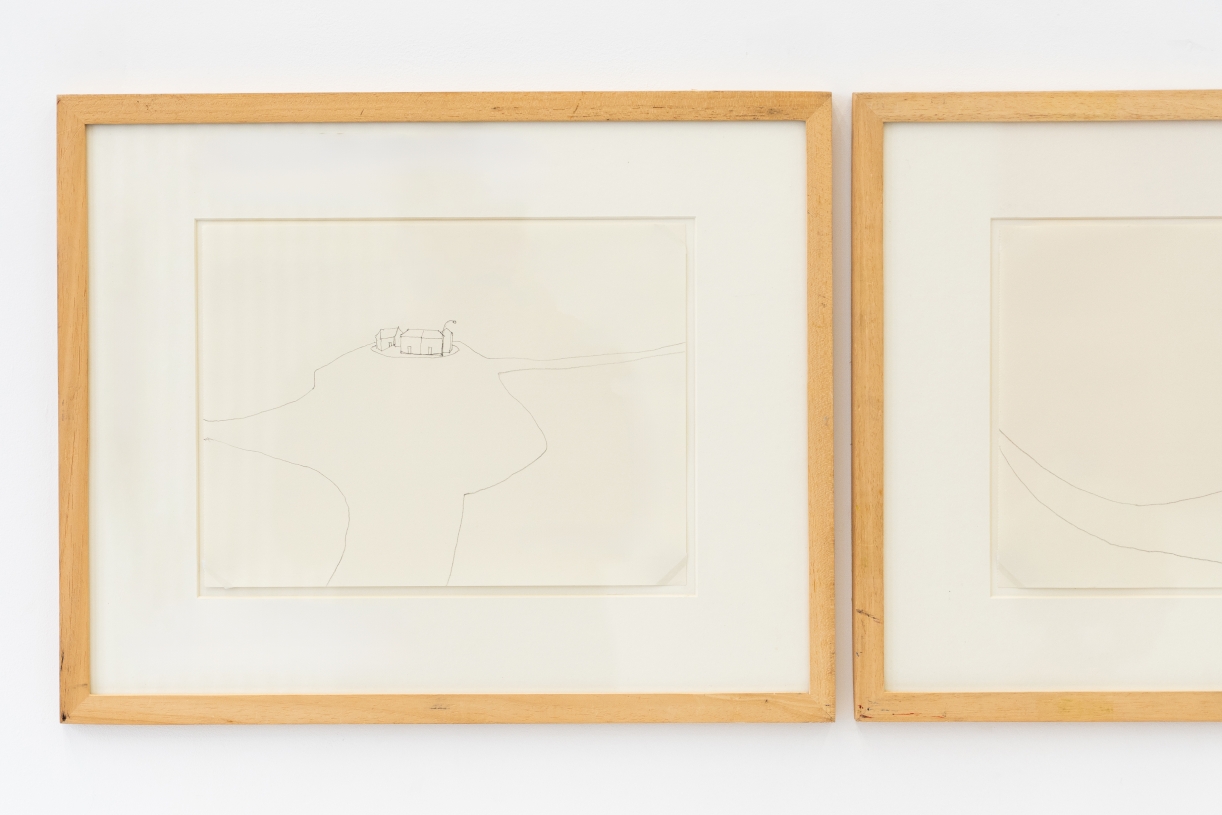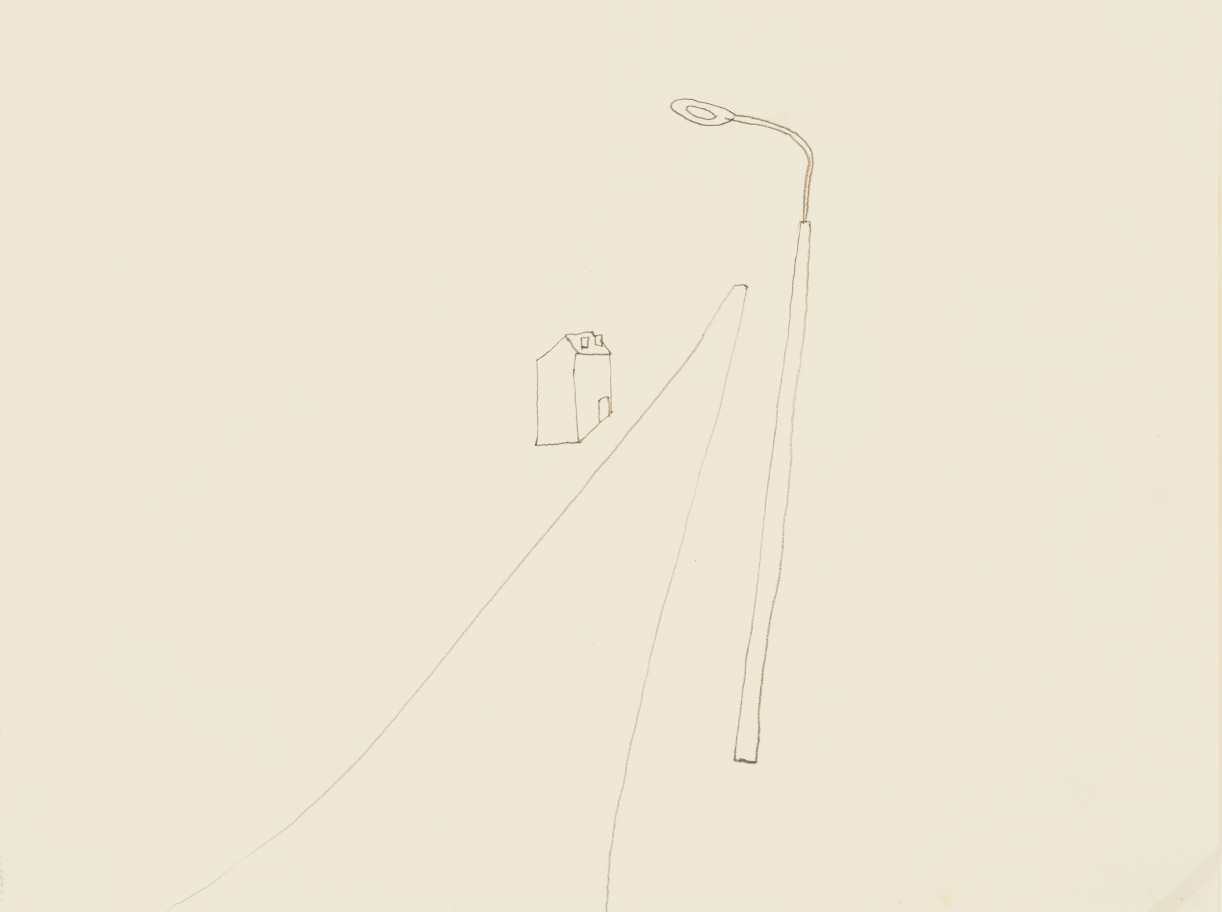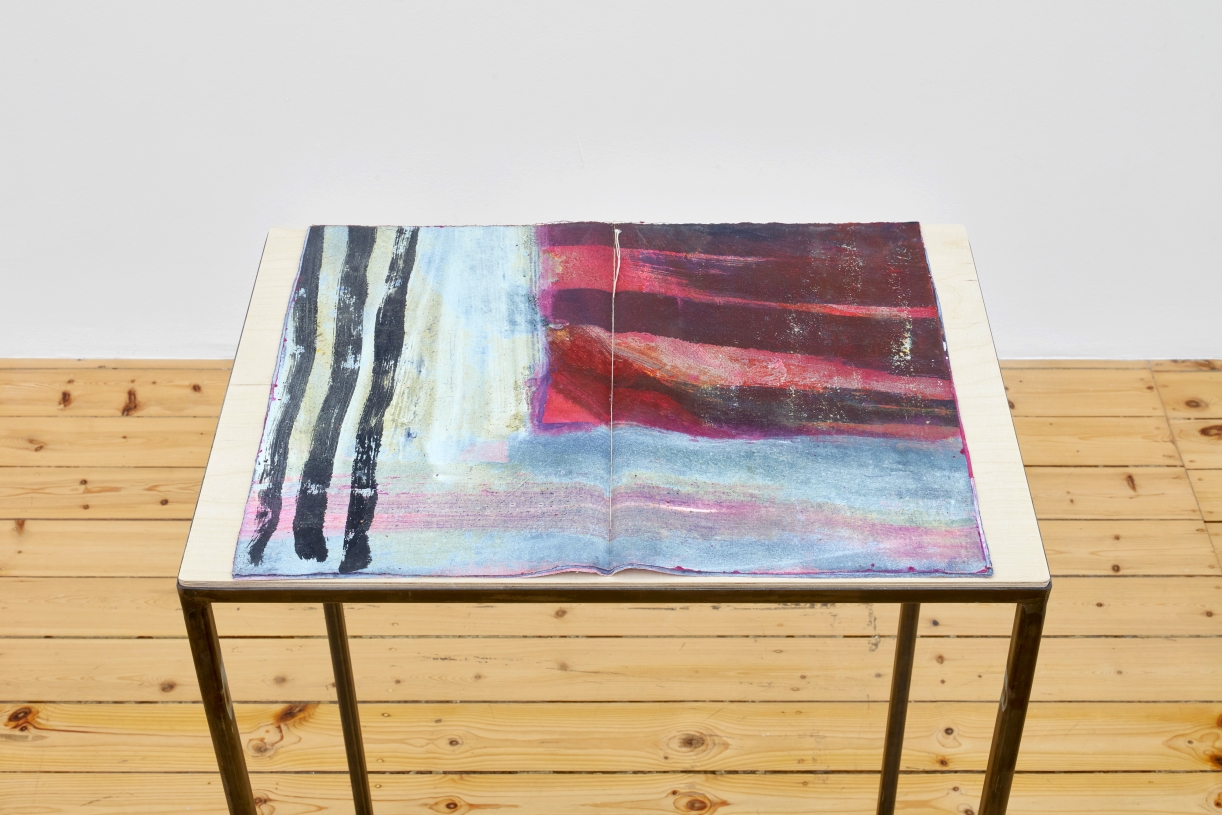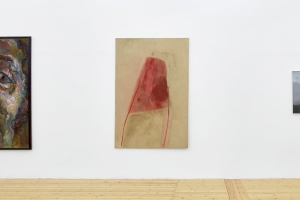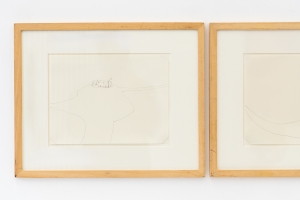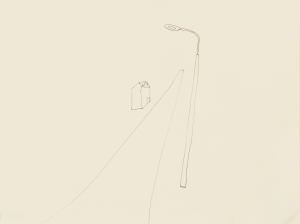pt 2
Spread across the two spaces, the show invites visitors on a visual journey through our past, starting with works from 1987 by the gallery’s first represented artists: Elsbeth Arlt, with an artist book, and Barbara Camilla Tucholski with a painting from her Langer Schlag series that depicts the demolition of a barn in Övelgönne, Schlewseig-Holstein as well as pencil drawings from the Lange Strasse series.
